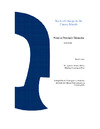Please use this identifier to cite or link to this item:
https://accedacris.ulpgc.es/jspui/handle/10553/75688
| DC Field | Value | Language |
|---|---|---|
| dc.contributor.advisor | Alonso Bilbao, Ignacio | es |
| dc.contributor.advisor | Casamayor Font, Mariona | es |
| dc.contributor.author | Preciado Mancera, Natalia | es |
| dc.date.accessioned | 2020-11-18T12:42:54Z | - |
| dc.date.available | 2020-11-18T12:42:54Z | - |
| dc.date.issued | 2020 | - |
| dc.identifier.uri | https://accedacris.ulpgc.es/handle/10553/75688 | - |
| dc.description | Máster en Oceanografía (2019-2020) | en_US |
| dc.description.abstract | The speed of the increase of the sea level in the past years has been getting faster. In the case of the Canary Islands, the change in the sea level has been presented differently in the diverse islands. The methodology used was to perform a harmonic analysis in the data of the tide gauge of the Canary Ports to subtract the cycles with astronomical origin and to verify that the major tidal constituents remain the same than the one reported by Puertos del Estado, the outliers were also extracted from the data. The resulting sea level data was used to perform a linear regression analysis with local and hourly records, there was observed the behaviors of the sea level with changing intervals of time, every three months, four years and the whole period It was found that there is a similar behavior between the global and the shortest periods of time when enough data were present. In the three-month periods of time a seasonal conduct was observed between the different ports, being the sea level highest in summer and lowest in winter. Monthly and seasonal correlations were made with the North Atlantic Oscillation (NAO), obtaining negative correlations values. Additionally, there were performed a future projections for and were compered with those of Ramírez Pérez et al. (2019), obtaining different results due to the procedures used, but staying within the behavior presented in various studies as the one of Calafat et al., (2012). | en_US |
| dc.description.abstract | El ritmo con el que aumenta el nivel del mar ha ido acelerando a lo largo de los años. En el caso de las islas Canarias, esto se ha ido presentando de diferente forma en las diversas islas. La metodología utilizada fue realizar un análisis armónico en los datos de los mareógrafos en los diferentes puertos de Canarias, para verificar que los constituyentes armónicos fueran similares a los reportados por Puertos del Estado, e igualmente para remover la ciclicidad presente en la serie dada por un componente, además de remover los valores atípicos. Se ejecutó un análisis de regresión lineal con registros horarios y locales ya tratados. Observando el comportamiento del nivel del mar con intervalos cada tres meses, cuatro años y del periodo completo. Se obtuvo un comportamiento similar al global en los periodos de tiempo más corto cuando se tenían los datos suficientes. En los períodos de tres meses se observó un comportamiento estacional análogo entre los diferentes puertos, siendo más alto en verano, y más bajo en invierno. Se realizaron correlaciones mensuales y estacionales con la Oscilación del Atlántico Norte (NAO), obteniendo correlaciones negativas. Asimismo, se realizaron predicciones para el año 2100 y se compararon con el modelo obtenido por Ramírez Pérez et al. (2019). obteniendo resultados diferentes por los procedimientos usados, pero manteniéndose el mismo comportamiento presentados en estudios como el de Calafat et al., (2012). | en_US |
| dc.language | eng | en_US |
| dc.subject | 250607 Geomorfología | en_US |
| dc.subject.other | Sea level rise | es |
| dc.subject.other | NAO index | es |
| dc.subject.other | Linear regression analysis | es |
| dc.subject.other | Global change | es |
| dc.title | Sea level change in the Canary Islands | es |
| dc.type | info:eu-repo/semantics/masterThesis | en_US |
| dc.type | MasterThesis | en_US |
| dc.contributor.departamento | Departamento de Física | es |
| dc.contributor.facultad | Facultad de Ciencias del Mar | en_US |
| dc.investigacion | Ciencias | en_US |
| dc.type2 | Trabajo final de máster | en_US |
| dc.utils.revision | Sí | en_US |
| dc.identifier.matricula | TFT-57262 | es |
| dc.identifier.ulpgc | Sí | en_US |
| dc.contributor.buulpgc | BU-BAS | es |
| dc.contributor.titulacion | Máster Universitario en Oceanografía por la Universidad de Cádiz, la Universidad de Las Palmas de Gran Canaria y la Universidad de Vigo | es |
| item.grantfulltext | open | - |
| item.fulltext | Con texto completo | - |
| crisitem.advisor.dept | GIR IOCAG: Geología Aplicada y Regional | - |
| crisitem.advisor.dept | IU de Oceanografía y Cambio Global | - |
| crisitem.advisor.dept | GIR IOCAG: Geología Aplicada y Regional | - |
| crisitem.advisor.dept | IU de Oceanografía y Cambio Global | - |
| Appears in Collections: | Trabajo final de máster | |
Page view(s)
174
checked on Sep 8, 2024
Download(s)
136
checked on Sep 8, 2024
Google ScholarTM
Check
Share
Export metadata
Items in accedaCRIS are protected by copyright, with all rights reserved, unless otherwise indicated.
